Unquestionably, one of the major draws which attracts tourists to North Wales is the stunning Snowdonia Mountain Range and its highest mountain which is the largest in the UK outside of Scotland.
If you are one of the many tourists who are frequenting the region with the intention of climbing Mount Snowdon, then you’ll probably be interested in learning more about Snowdon walking routes that are available to choose from.
There are six different Snowdon routes in total, each of which varies in difficulty. Unsurprisingly it is the easiest Snowdon route which is the most popular, but that won’t be right for everyone. Perhaps you like a bit of a challenge or would prefer a route which offers the best views. We’ve got all types of tourists covered in our guide to the best walking routes up Snowdon. Read on to learn more and to find the best Snowdon walking route for you ahead of your next trip to North Wales.
The Easiest Snowdon Route
The most popular and easiest Snowdon Route is the Llanberis path. As the name suggests, this route starts from the village of Llanberis where you’ll find plenty of facilities including cafes and restaurants where you’ll be able to replenish your energy levels once you have completed the return journey.
In total, this route covers 9 miles (there and back) but has the most gradual ascent. As a result it is generally considered to be the easiest Snowdon route and the best option for those completing the trip with children.
The Llanberis path follows the Snowdon Mountain Railway line in most places, offering you the chance at an even easier route to the summit if walking the whole 9 miles is a little bit much for you.
The Hardest Route Up Snowdon
On the other side of the scale, arguably the hardest route up Snowdon is the Watkin Path which starts from Nant Gwynant near Bethania. At 8 miles in total, it is shorter than the Llanberis path but it offers a much steeper ascent as opposed to the gradual gradient change on the Llanberis Path.
This makes it a massive challenge on the ascent, particularly as you near the summit which requires a little scrambling. You should therefore only consider taking on the Watkin Path route up Snowdon if you are in a good physical condition and an experienced rambler.
One of the key attractions of the Watkin Path though is its scenic beauty encompassing beautiful woodlands and waterfalls. It’s well worth the trip if you think you are up to the challenge.
The Fastest Route Up Snowdon
Potentially the fastest route up Snowdon is the Pyg Track which measures just 7 miles in length (there and back). This commences from the Pen-y-Pass car park near the Warden Centre where you will find plenty of parking spaces and a sizable cafe which serves a range of hot beverages, breakfasts, lunches and snacks.
The Pyg Track lies somewhere in the middle of the two aforementioned Mount Snowdon Routes, being shorter in distance than the Llanberis Path but also offers a far smaller gradient than the Watkin Path. It is estimated that this route should take the average walker between 4 and 6 hours.
One word of warning is that the Pyg Track does tend to be rather uneven. You should therefore take care with your footing and utilise appropriate footwear to avoid suffering any difficulties.
What is the Best Route Up Snowdon With a Dog?
If you are wondering if you can take dogs up Snowdon, then the answer is a confident yes. You will probably then be wondering which is the best route up Snowdon with a dog?
Well, in these instances we would once again have to recommend the Llanberis path. This is due to the smaller gradient, with sharper descents potentially causing problems for less athletic dogs, something which renders both the Pyg path and Watkins Path to be more of a risk for pet owners.
If you are considering taking your dog up Snowdon, then we would recommend swapping out a tight lead for an extendable one for the majority of the walk. We would also recommend that you keep your dog on the lead at all times. This is due to the presence of sheep on all routes up Snowdon which generally don’t mix well with the furry members of the family.








